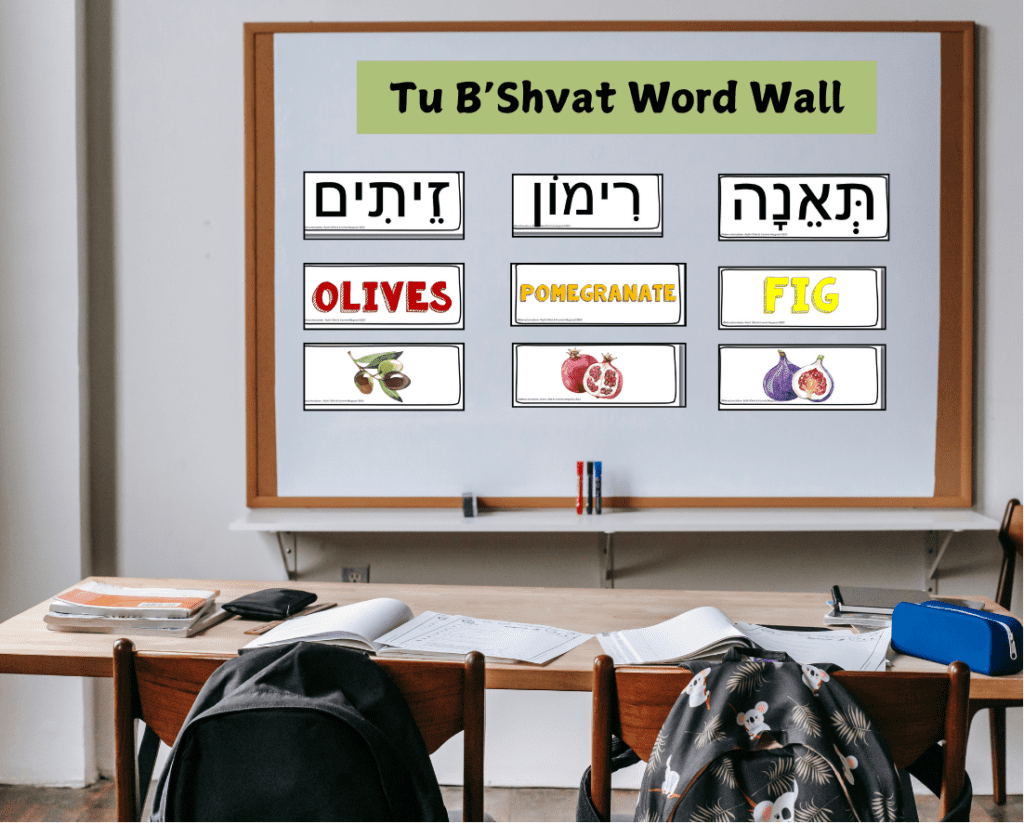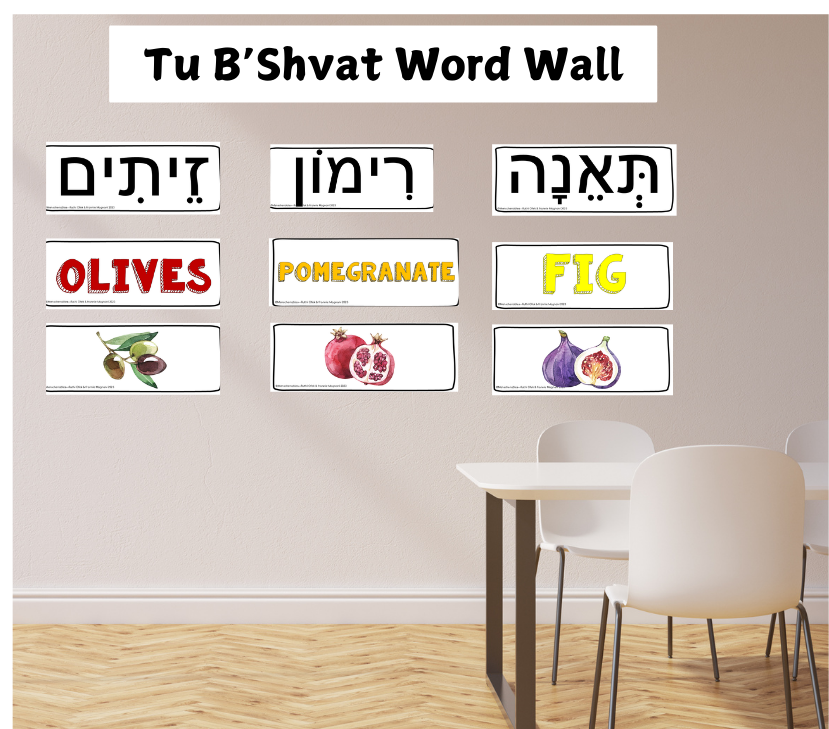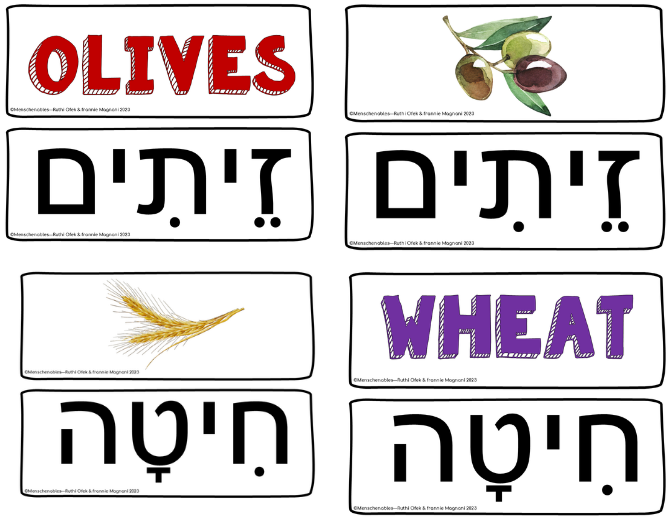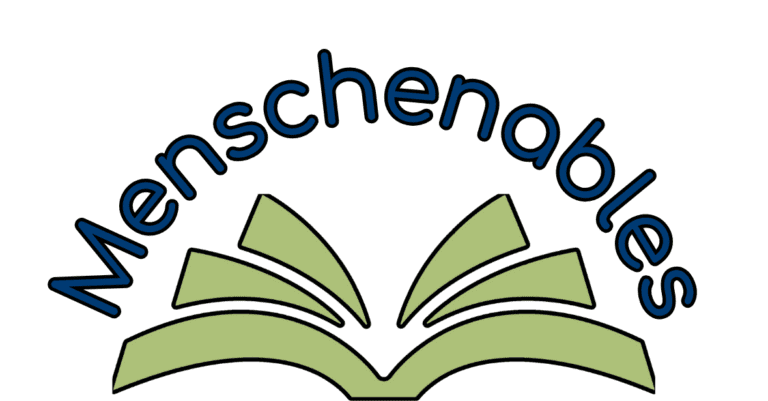What is a Word Wall?
A word wall is a wall dedicated to displaying high-frequency words (these could be sight words or words used a lot in your class) that are important for your students to know and use. In early elementary classrooms, these are words that children are learning to read and write. In upper-grade classrooms, these can be words related to concepts and topics that students are learning about. You could have a word wall about math that incorporates math definitions and symbols. Or, Hebrew or Judaic concepts wall that, throughout a unit, gets filled with the holiday or unit’s vocabulary. You’ll know you have a successful word wall when students use it daily to find the right word. It is important to note that a word wall left up for too long or unattended will become wallpaper, like most classroom posters. A word wall is meant to be alive – interactive.
Word walls help expand students’ vocabulary and make it easy for students to access the content vocabulary words we expect them to use in their discussions and writing.

Benefits of using a word wall in upper elementary
Word walls encourage students to use new terms in their writing and class discussions.
- A word wall in your classroom encourages students to use content-specific vocabulary terms in their writing and classroom discussions. Students are more likely to use terms when they see them displayed and can double-check to ensure they know the word’s meaning before using it. Post words you want students to use in their writing or discussion more frequently.
Word walls expand student’s vocabulary.
- You constantly introduce and use new vocabulary terms during instruction as a teacher. You might even write a vocabulary term on the board or have your students write it in their notebooks, but as soon as you erase the board or students put their notebooks away, those words you introduced will be quickly forgotten. Having a word wall displayed keeps new words at the forefront of student’s minds. If you want to expand students’ vocabulary, you must ensure that they are constantly seeing and using the new terms you are introducing, and a word wall is a great way to do both.
Word walls are an effective instructional tool for ALL students.
- A word wall, especially when the word cards have a visual cue, is an excellent tool to meet the needs of students with learning challenges or differences. Displaying a word wall could be just a tool to help your students access new vocabulary terms and understand their meaning.
How to make an effective word wall display

- Post words, definitions, and pictures. This will help all students understand and remember the meaning of words, and they will be more likely to use those words in their writing and discussion if they feel confident they know the meaning.
- Post the word wall in a part of the classroom where the words are visible to students. This will allow them to easily access the words from almost anywhere in the room.
- Organize the words in a way that makes sense. Most lower elementary word walls are organized alphabetically, but word walls can be organized by topic or content in upper elementary classrooms. If you want students to use the words more in their writing and discussions, they must effortlessly access all the content-related terms simultaneously. Make sure your students know the system for organizing the words.
- Ensure students know the word wall, its location, and its purpose. To introduce the word wall to your students, doing a mini-lesson at the beginning of the year is a good idea. If you do not explicitly show the students the word wall, they will never use it. They had no idea what it was there for. If the word wall is meant to be a tool for your students, they must be taught how to use it.
- Don’t add all the word wall cards at the beginning of the year. The goal is that as your students’ knowledge and understanding of a topic grows, so will the word wall. I like to have my word wall cards printed and ready to go at the beginning of the year, and then, as I teach lessons on particular topics, I can use the actual word wall cards to introduce those terms to my students. After our lesson, the word wall cards were placed on the word wall and will remain as reference material for the rest of the year.
How to get students actually to use the word wall
- When students write content, challenge them to use a certain number of words from the word wall. Make it part of the assignment while giving them freedom in choosing which words to use.
- Regularly model how to use the word wall. When writing or discussing a particular topic, point out words on the word wall and then model using them in your writing or responses.
- Play games with the word wall. It would be great if you had just a few minutes left at the end of a lesson or during a transition. You can play tons of games with word wall cards. My favorite is “I’m thinking of a word…” You can give clues or even get your students to provide clues about a particular word and see which student can guess it first.
- Regularly add new words to the word wall. If you aren’t adding words to your word wall, your students will probably forget it is there. Make sure your word wall becomes a part of your routine.
- Let students come up with words to add to the word wall. If they have some ownership over the word wall, your students will use the words a lot more. Let them find essential words, and you could even let them design the card to be posted on the word wall. The more ownership they have, the more likely they are to use the words on the word wall.
Already have a word wall? Take it to the next level.

- Use Velcro or sticky tack to make the words removable so students can take the words they need to their desks for reference.
- Write the words on the backs of envelopes. Place the note cards inside each envelope, with the word written on each. Then, post the envelope and let students select a notecard for reference when needed.
- Add a new word to the wall for a while, and have students hunt for this visiting word. Then, see if they can use the visiting word in their writing and discussion.
- Challenge students to write a story (or article) using as many words from the word wall as possible.
Word walls effectively improve students’ content vocabulary and academic language in upper elementary school. If you don’t have or utilize a word wall, I hope you are starting to dream about incorporating one into your classroom. Find a Tu B’Shevat Word Wall in my TPT store-Menschenables.


